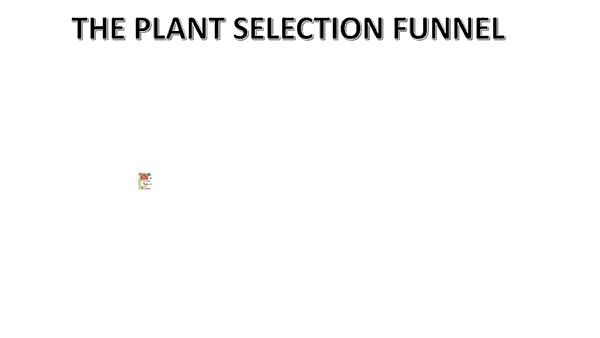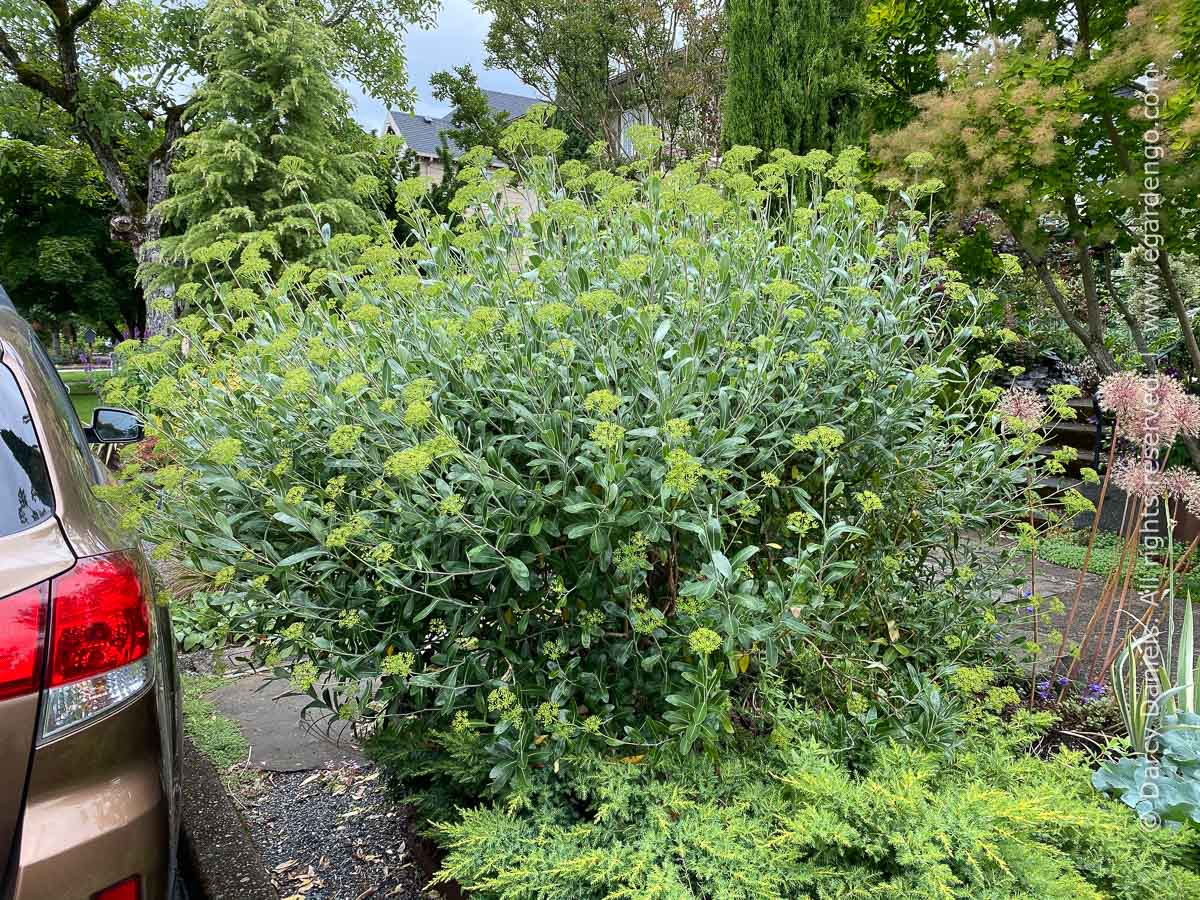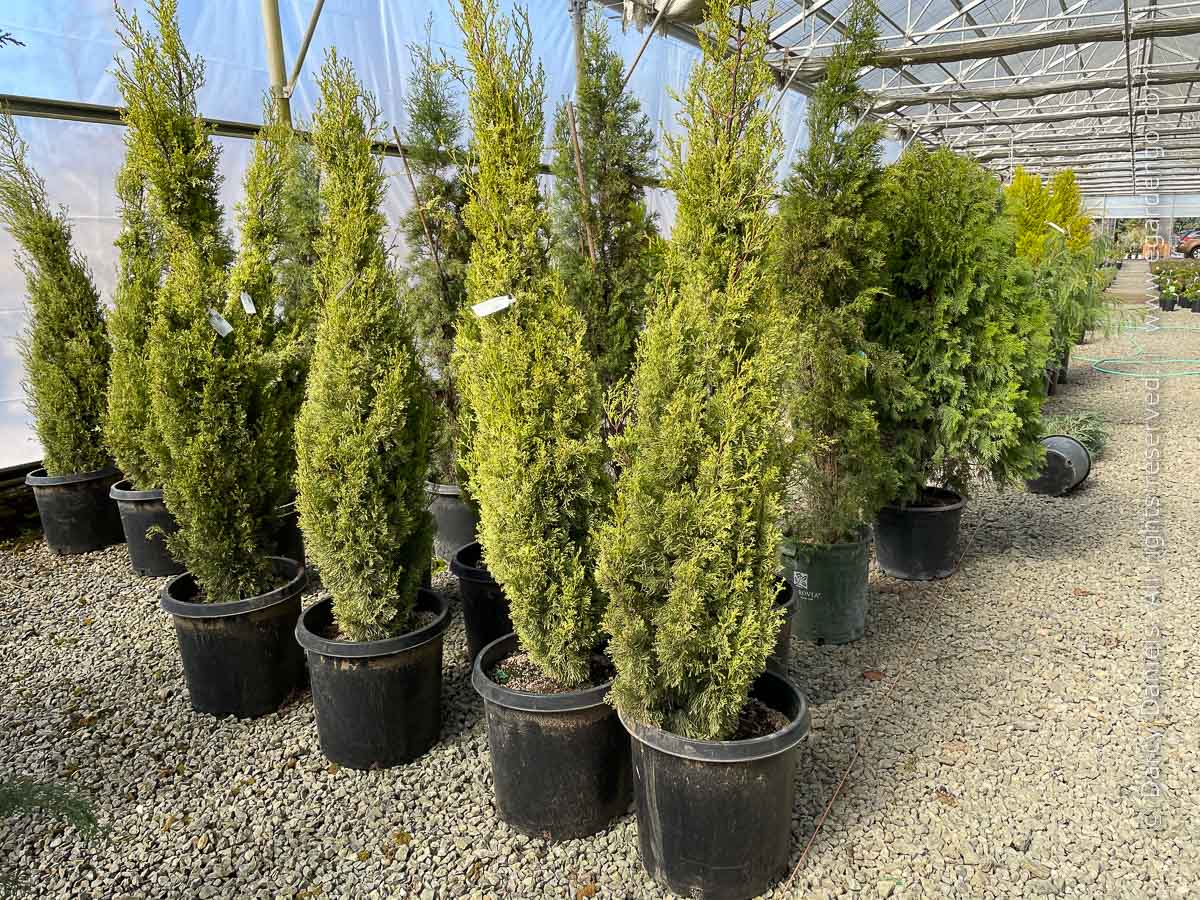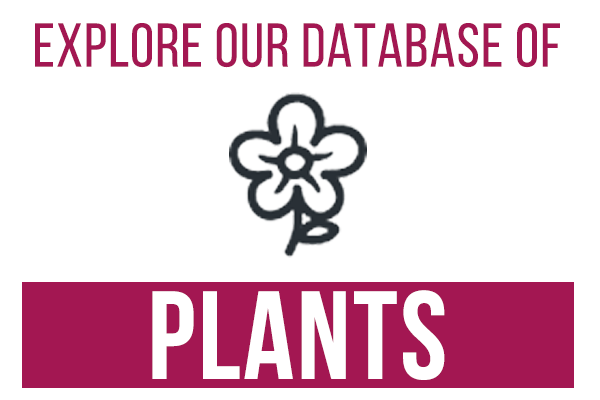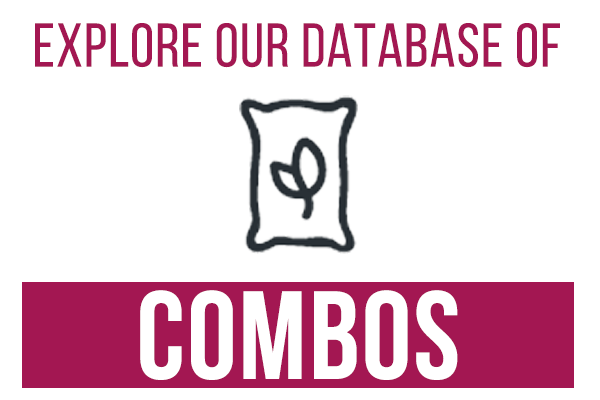I talk with a lot of gardeners who get stymied and quickly overwhelmed when they're trying to decide what to plant in their gardens. Below I describe a method for thinking through the options in an organized and stress-free way.
Selecting plants is an iterative process.
Before we choose a plant—an actual, specified, particular plant—it's a shape, a color, a texture. It's of a particular height and width. It's suited to particular growing conditions. It's described, and its needs understood. By going through this process of understanding and describing a plant and the growing situation it's being slotted for, we're narrowing the plant possibilities from the whole wide horticultural world to a much smaller, more specific, set of choices that are suited for this one particular patch of earth.
advertisement
Thank goodness! Without some limiting criteria, we'd be spinning our wheels.
The trick is to start. Somewhere. Anywhere. Plant shape, size, foliage color or texture; any of these are good places to start. As you come up with options, an essential first step is to make certain that the plants you're considering are suitable for your intended growing situation. For example, your first narrowing criteria are the growing zone you're in, the exposure of your site, the plant's water needs and soil requirements, and so on. After that you can heap on any number of aesthetic and functional criteria. If you end up with zero options at any point, go back to the proverbial drawing board and tweak any of your criteria that can be fudged. And no, matching growing conditions isn't optional, that's a must!
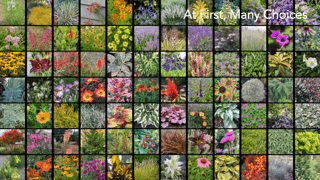
Here's a walk-through of a hypothetical example.
Let's say you've decided that you need a columnar plant to add some drama and vertical lift to an area of your garden. In your preliminary searches, you're going to find a lot of possibilities to consider. Frankly, there are numerous plants that meet that basic description—more than is practical to list fully, so let's just name a few that come to mind:
- Calocedrus decurrens | Incense Cedar
- Cephalotaxus harringtonia 'Fastigiata' | Plum Yew
- Chamaecyparis lawsoniana 'Snow White' | Lawson's Cypress
- Cryptomeria japonica 'Yoshino' | Japanese Cedar
- Cupressus sempervirens 'Monshel' | Tiny Tower Italian Cypress
- Cupressus sempervirens 'Swane's Gold' | Italian Cypress
- Cupressus sempervirens 'Totem' | Italian Cypress
- Golden Sentinel columnar apple tree
- Parrotia persica 'Vanessa' | Ironwood
- Rhamnus frangula 'Ron WIlliams FINE LINE | Buckthorn
- Taxus x media 'Bean Pole'
- Thuja occidentalis 'DeGroot's Spire' | Compact Columnar Arborvitae
Let's say this is in a highly visible section of your garden and that it's important that the plant is "present" year-round, so we narrow it to only the evergreen options. Whew! Still a lot of choices!
- Calocedrus decurrens
- Cephalotaxus harringtonia 'Fastigiata'
- Chamaecyparis lawsoniana 'Snow White'
- Cryptomeria japonica 'Yoshino'
- Cupressus sempervirens 'Monshel'
- Cupressus sempervirens 'Swane's Gold'
- Cupressus sempervirens 'Totem'
Golden Sentinel columnar apple treeParrotia persica 'Vanessa'Rhamnus frangula 'Ron Williams' FINE LINE- Taxus x media 'Bean Pole'
- Thuja occidentalis 'DeGroot's Spire'
Let's imagine that the growing conditions of the site are full, blasting sun and won't be under regular irrigation. So we whittle our remaining options to those that are uber drought-tolerant
toughies.
- Calocedrus decurrens
Cephalotaxus harringtonia 'Fastigiata'Chamaecyparis lawsoniana 'Snow White'- Cryptomeria japonica 'Yoshino'
- Cupressus sempervirens 'Monshel'
- Cupressus sempervirens 'Swane's Gold'
- Cupressus sempervirens 'Totem'
Golden Sentinel columnar apple treeParrotia persica 'Vanessa'Rhamnus frangula 'Ron Williams' FINE LINE- Taxus x media 'Bean Pole'
- Thuja occidentalis 'DeGroot's Spire'
However, our hypothetical garden is small, so we don't want to give up too much of a footprint. So that leaves us with:
Calocedrus decurrensCephalotaxus harringtonia 'Fastigiata'Chamaecyparis lawsoniana 'Snow White'Cryptomeria japonica 'Yoshino'- Cupressus sempervirens 'Monshel'
- Cupressus sempervirens 'Swane's Gold'
- Cupressus sempervirens 'Totem'
Golden Sentinel columnar apple treeRhamnus 'Fine Line'Thuja 'DeGroot's Spire'
A very effective way of breaking the tie and honing in on the one is to consider what it's going to be paired with in your garden. Let's further say that you've got a plant in the bed already:
Bupleurum fruticosum
This is an evergreen shrub with blue-green foliage and chartreuse dill-like umbels in summer. So, our best option with this existing plant taken into consideration is:
Cupressus sempervirens 'Swane's Golden'
Ta da! A perfect choice!
A match for growing conditions, its yellow-green evergreen foliage will pair perfectly with the blooms of the Bupleurum and we'll feel clever whenever we enjoy the pleasing repetition of color between the two!
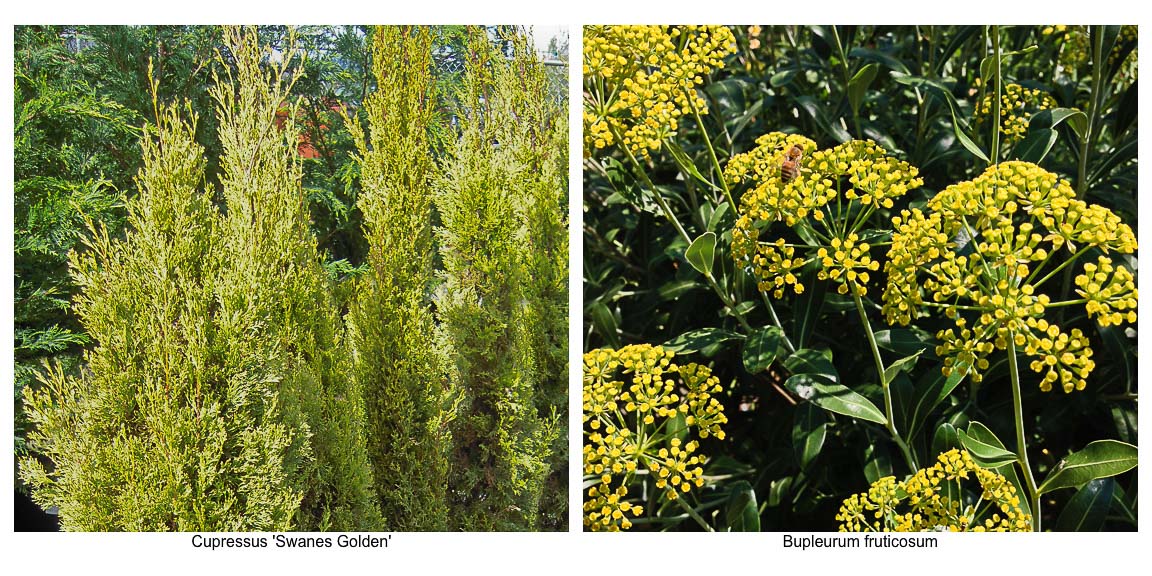
For sure, any change in criteria along the way would result in different plants ending up on the resulting short list. Thinking about plants as a shape, size, texture and color while solving for cultural needs is the basis of the magazine-worthy, Pinterest-primed, Instagram-ready, plant combos you've been drooling over and dreaming about recreating in your home garden.
As you go through this decision-making process, if something doesn't seem quite right or isn't floating your boat, go back and try again with small tweaks in your negotiable criteria. Once you get the hang of thinking about plant selection in this way, it becomes second nature. But in the meantime, here's the really cool part: these secrets of success are baked into the eGardenGo's powerful search functions.
SEARCH PLANTS
SEARCH COMBOS

advertisement

